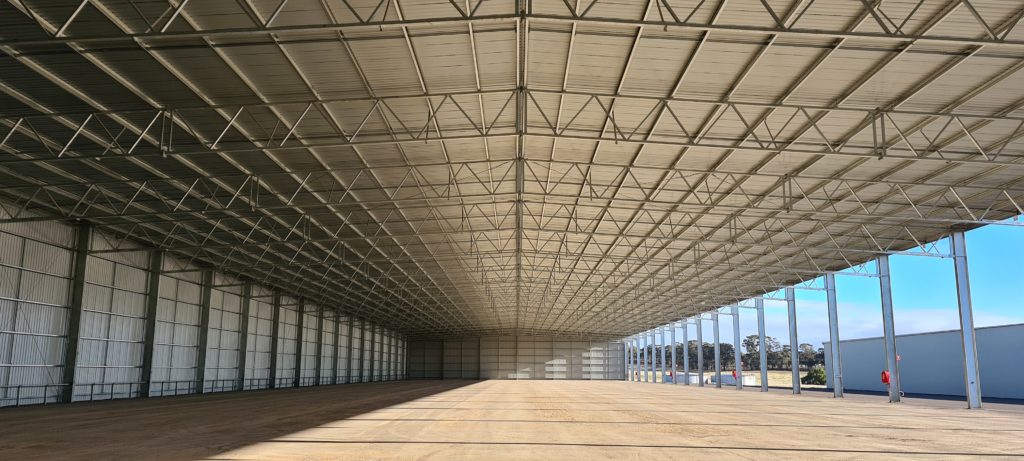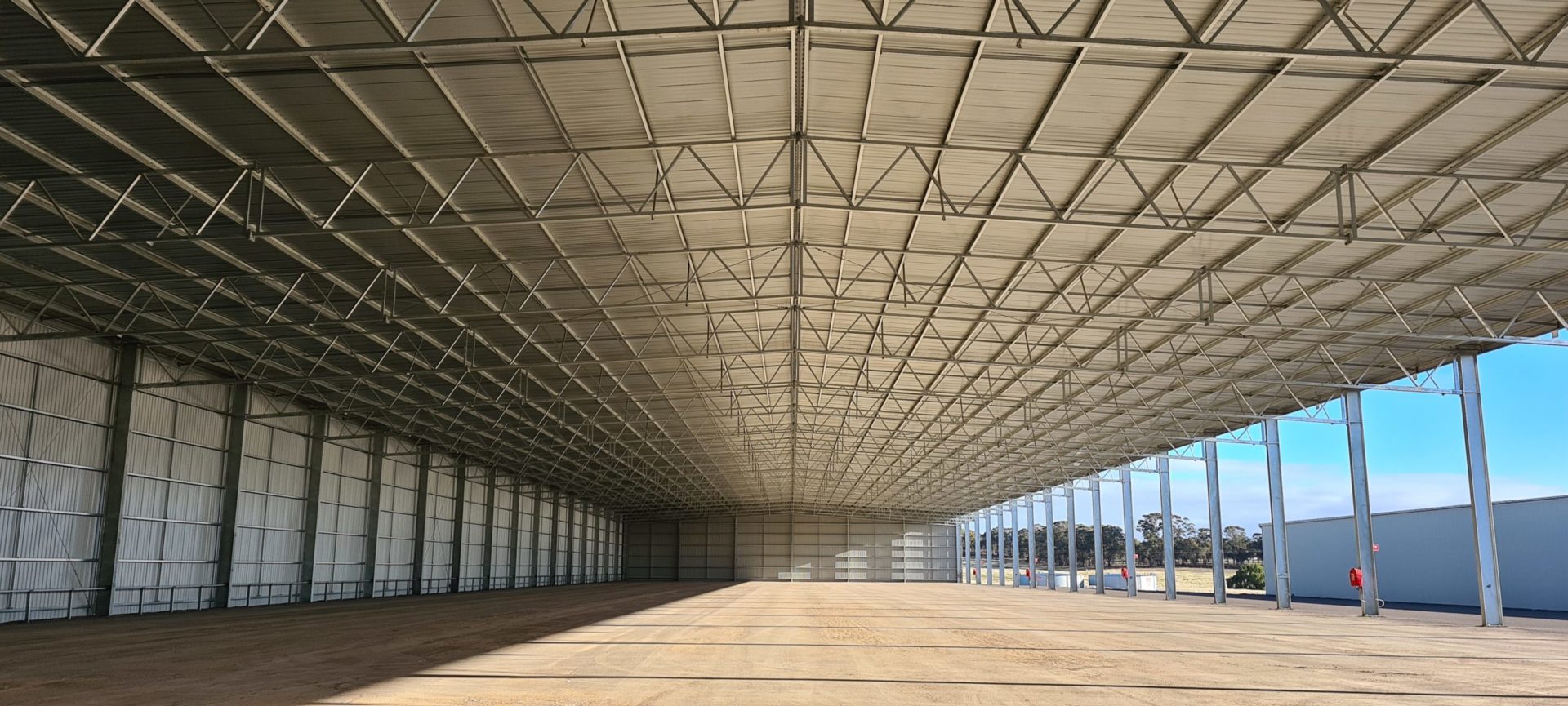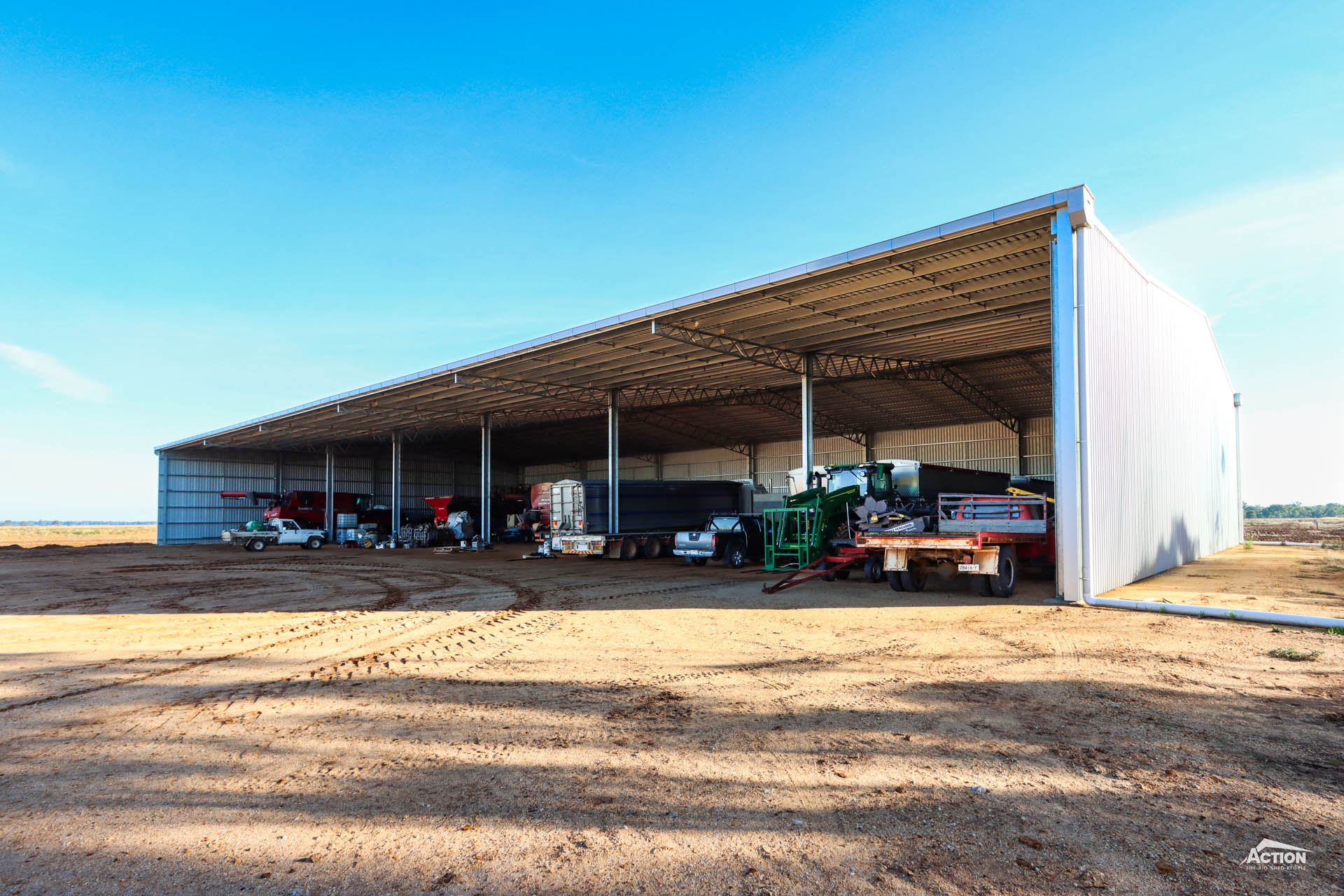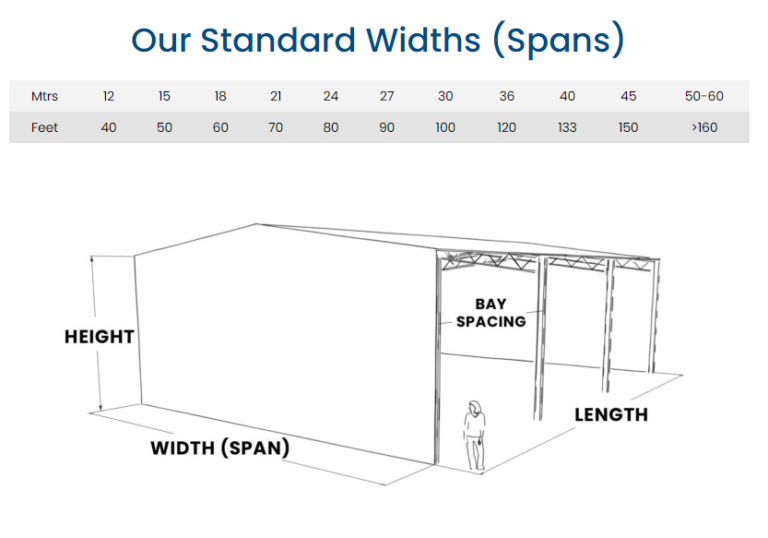The History of Hot-Dip Galvanising
The first record of hot dip galvanising steel was in France in 1742 by Chemist Paul Jacques Malouin.
What Is Hot-Dip Galvanising?
Hot-dip galvanising is the process of coating iron or steel with a layer of zinc. The metal is immersed into a bath of molten zinc at temperatures of 445°C to 465°C.

At Action, every one of our sheds is fully hot-dip galvanised – both columns and trusses.
Watch the video below or read on to learn more about hot dip galvanising and how it works.
How Does It Work?
Hot-dip galvanising steel (HDG) prevents corrosion in three ways:
Barrier Protection
Zinc metal is so dense that no electrolytes such as rainwater can penetrate the coating meaning the base steel will not corrode.
Cathodic Protection
When the coating is damaged in the presence of an electrolyte the zinc gives up electrons to protect the steel, providing a sacrificial coating. So, as long as there is zinc on the surface, the steel will be protected.
Patina Protection
When the galvanising process is complete and the zinc metal is exposed to the oxygen in the air, it will react with the oxygen to form zinc hydroxide. Over time as the zinc hydroxide is exposed to moisture in the air a thin layer of zinc carbonate forms. This is a passive patina film that is tightly bound to the zinc of the galvanised coating and is what makes a hot-dip galvanised coating so durable.
What Are the Benefits?
Lowest long-term cost
Although the lower initial cost of other commercial coatings such as paint will often be tempting, when you compare the longevity of each coating it is obvious that hot-dip galvanising comes out on top. Hot-dip galvanised steel will not require maintenance for over 100 years so it does not need the time, money and labour spent on constant ‘touching up’ that a painted frame would. In other words, hot-dip galvanised coating is the most cost-effective coating over the long-term.
Lowest maintenance
Zinc’s cathodic protection means that if small areas of steel are exposed by impact or abrasion they will still be protected. So, unlike other coatings, a hot-dip galvanised coating does not need small damaged areas to be touched-up or repaired.
Toughest coating
The metallurgical structure of hot-dip galvanising provides durability and resistance to damage from transport, erection and service.
Complete protection
- When steel such as a shed column or truss, is immersed into the bath of molten zinc it means that every part is protected, even recesses, sharp corners and inaccessible areas.
- Unprotected steel will corrode 10 – 40 times faster than hot-dip galvanised steel, depending on the environment.
FAQ
- What happens if the zinc coating on my shed frame is damaged? Will the exposed steel rust?
No. One of the ways that zinc coating protects steel is through cathodic protection. When the zinc coating is damaged in the presence of an electrolyte such as rainwater, a galvanic cell is created. Because zinc is more anodic than steel, it readily gives up electrons and acts as a sacrificial coating. The surface is quickly covered, preventing corrosion.

- How long does hot-dip galvanising steel add to its lifespan?
According to the American Galvanisers Association, in a rural environment, steel with an average of 3.00 mil of zinc coating will not need maintenance for 100 years! In an industrial environment, they suggest over 70 years.
- Is hot dip galvanising abrasion resistant?
The toughness of a hot-dip galvanised coating makes it suitable in situations where abrasion could be a problem. Even when base steel is exposed the sacrificial corrosion protection properties of a galvanising coating will protect these exposed areas and prevent unsightly and damaging rust.
- How do I care for and maintain hot-dip galvanised steel?
Hot-dip galvanised steel is very easy to maintain, and can be done by simple washing down with water.
Avoid abrasive washing of your hot-dip galvanised product because it can remove the protective patina film (we mentioned this earlier) and the hot-dip galvanised steel has to build up this barrier protection again.







